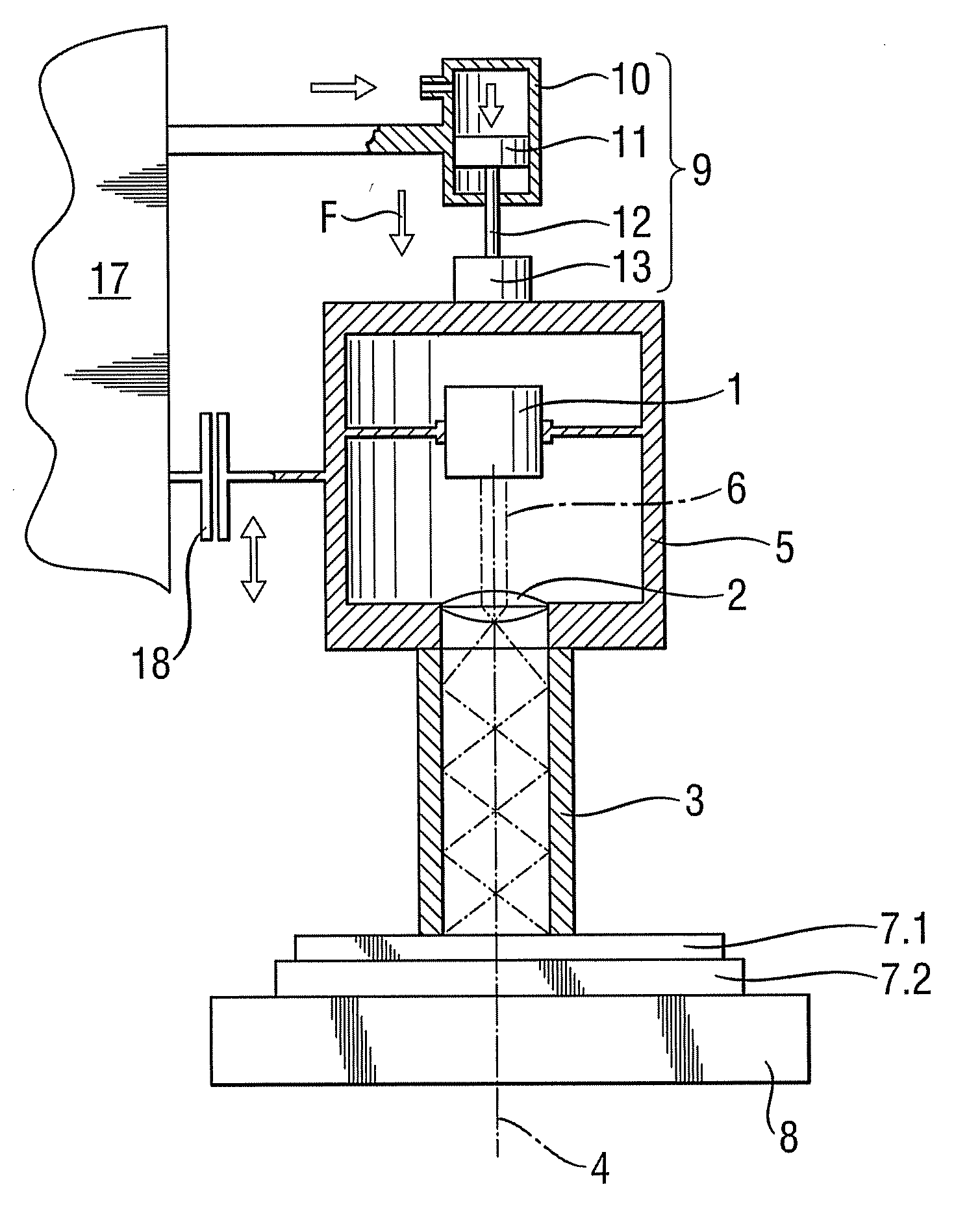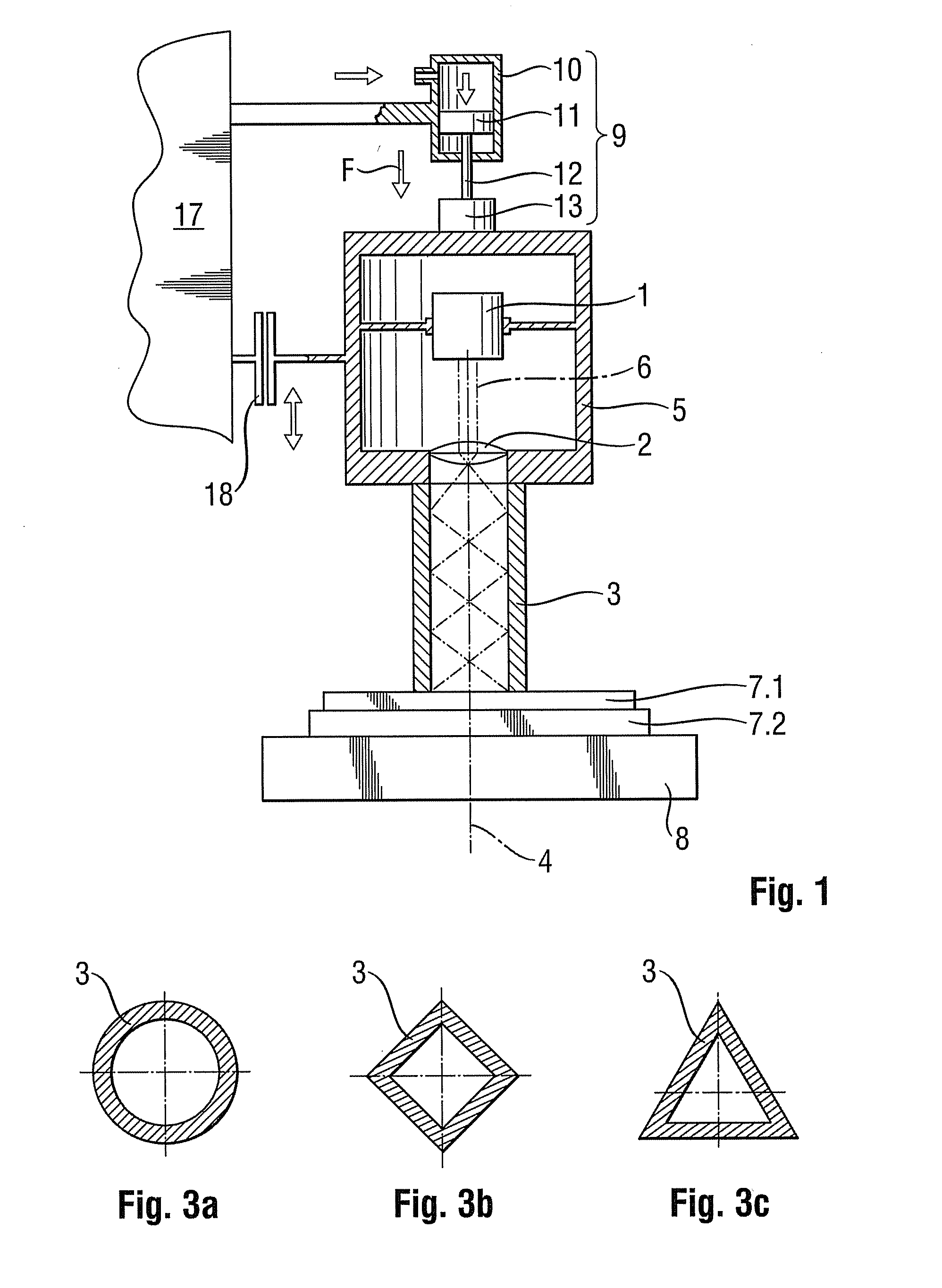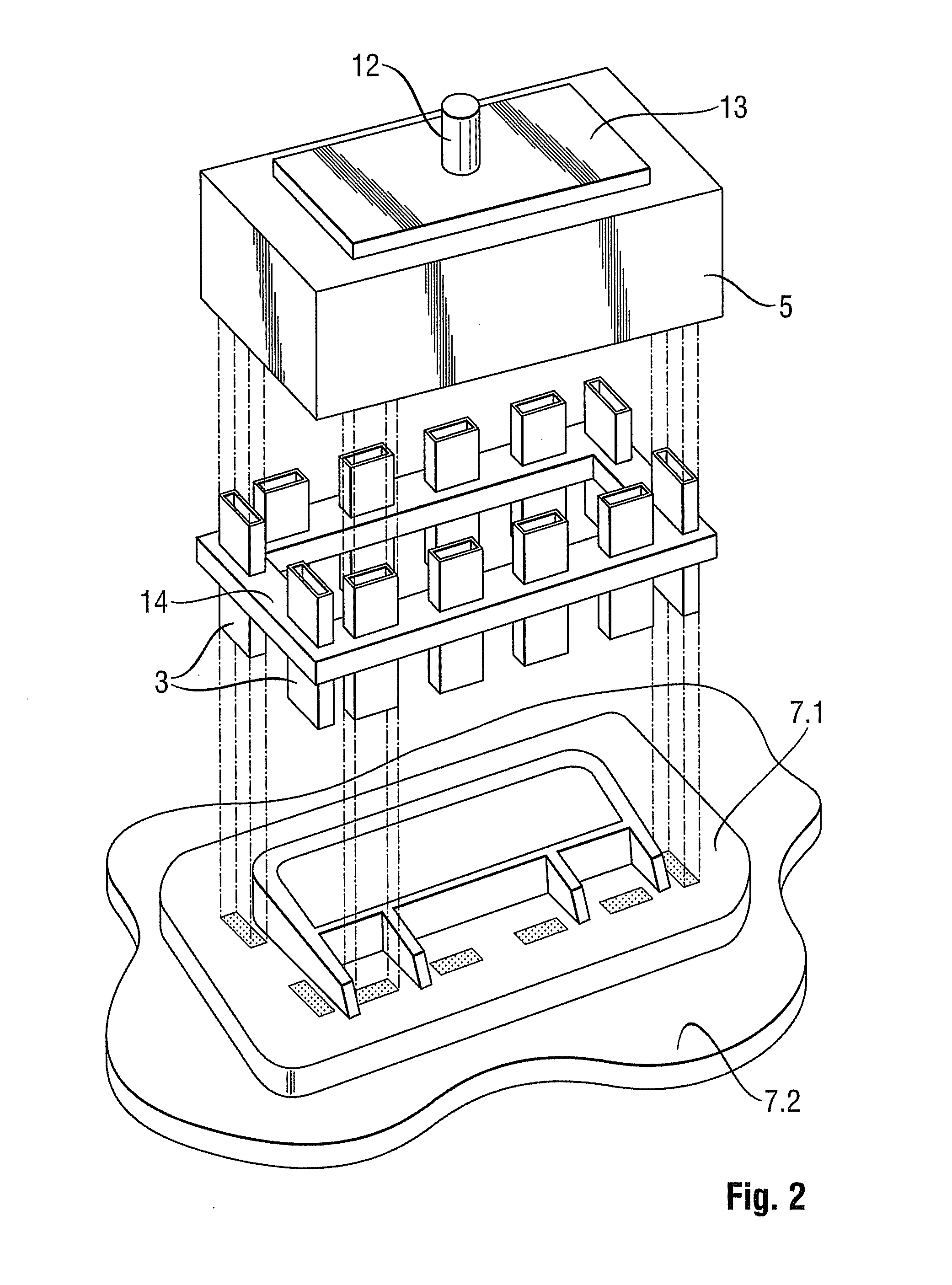System for Spot Welding with a Laser Beam
a laser beam and laser beam technology, applied in laser beam welding equipment, welding equipment, manufacturing tools, etc., can solve the problems of unnecessarily high degree of technical complexity and cannot be automatically used for other combinations of components, and achieve the effect of easy production
- Summary
- Abstract
- Description
- Claims
- Application Information
AI Technical Summary
Benefits of technology
Problems solved by technology
Method used
Image
Examples
Embodiment Construction
[0039]FIG. 1 shows a first practical example of a system for spot welding with a laser beam.
[0040]The system essentially comprises a high-power diode laser 1 which emits a laser beam 6, a beam-forming optical system 2 which, in the direction of the beam, is disposed downstream thereof and a tube 3, which together are disposed on an optical axis 4 and which are rigidly connected to each other via a housing 5.
[0041]It is useful if the high-power diode laser 1 is a laser diode bar that comprises a plurality of individual laser diodes, which, overall, form an emitting line measuring, e.g., 1×10 mm, which are preceded upstream by a collimating optical system.
[0042]The pre-collimated laser beam 6 is expanded by means of the downstream beam-forming optical system 2 to ensure that it is completely coupled into the tube 3 and has an angle of divergence that leads to multiple reflections as the laser beam passes through the tube. To minimize the radiation losses, multiple reflections should t...
PUM
| Property | Measurement | Unit |
|---|---|---|
| Force | aaaaa | aaaaa |
| Pressure | aaaaa | aaaaa |
| Size | aaaaa | aaaaa |
Abstract
Description
Claims
Application Information
 Login to View More
Login to View More - R&D
- Intellectual Property
- Life Sciences
- Materials
- Tech Scout
- Unparalleled Data Quality
- Higher Quality Content
- 60% Fewer Hallucinations
Browse by: Latest US Patents, China's latest patents, Technical Efficacy Thesaurus, Application Domain, Technology Topic, Popular Technical Reports.
© 2025 PatSnap. All rights reserved.Legal|Privacy policy|Modern Slavery Act Transparency Statement|Sitemap|About US| Contact US: help@patsnap.com



